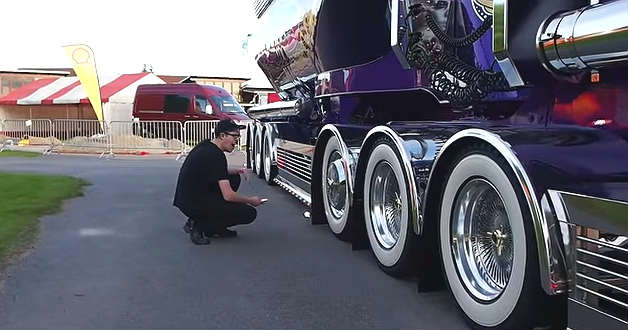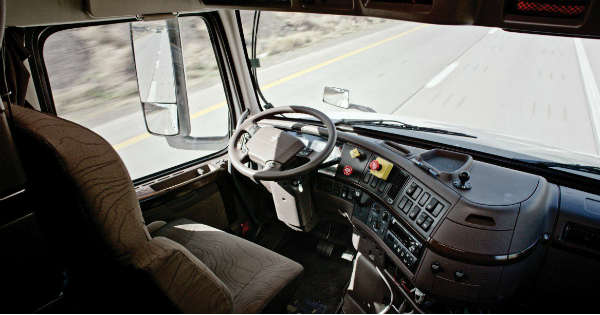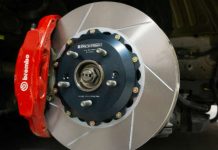The birds are chirping. The sun is shining. The campsites are calling.That itch to hit the open road is back… Whether this is your first season, or you’re a year-round full-timer, an RV will provide you the perfect way to scratch that wanderlust itch. Before you take to the road, make sure your RVs is ready for whatever adventure you throw its way. Get a tune-up and check your tires.

When you’re hauling that much weight, good tires for your RV are non-negotiable.
Check out this guide to tires for RVs to make sure you’re making the right choice for your adventure wagon.
Start of the Season Check-up
Your RV has been sitting unused for the past four months. Before you take it to some remote location, take a minute to do a check-up.
In addition to your regular oil changes and kitchen cleaning, make sure you properly inspect the tires.
How old are your tires? If you can’t quickly and easily answer that question, it may be time for new ones.
One quick way to check the age of your tires is to look at the tire sidewall. The Dept. of Transportation requires all tires manufactured since 2000 to have a Tire Identification Number (TIN).
The last four digits of the numbers stamped into your tire sidewall are the date your tire was manufactured. The first two digits indicate the week of the year. The last two digits indicate the year.
For example, if the final four digits on your tire sidewall are 1814, your tire was manufactured during the 18th week of the year 2014. This was late April of 2014.
Although knowing what year your tires were manufactured is helpful, it doesn’t give us an exact “replace by” date. The amount you drive, driving conditions, and storage conditions play a huge role in how quickly your tires need to be replaced.
Always check with a tire professional to find out if your tires are still safe. If you do need new tires, shop around for a good deal before you buy.
Shopping for Tires for RVs
There are a couple of tire options out there for RV tires. Make sure you understand the differences and are picking the right options for your rig.
The last thing you want is to get stuck somewhere because you bought inadequate tires.
Tire Size
For specifics on tire size, you will need to consult your RV owner’s manual. This will give you basics on what you need to be looking for in new tires.
Once you have the size narrowed down, you can choose between some other options.
ST vs LT
The two main types of tires that you find on RVs are special trailer tires (ST) or light truck tires (LT).
ST tires are designed for the trailer axles only. This means that they should be used on 5th wheels, pop-up trailers, toy haulers, and travel trailers. Do not put ST tires on your driving or steering axles.
ST tires have stiff sidewalls and bigger polyester cords. This gives them increased strength to handle heavier loads. It also increases durability to offset the additional wear and tear that extended towing puts on tires.
ST tires usually max out at speeds of 65 mph, which is fairly fast for hauling a lot of weight anyway.
LT tires should be used for driving and steering axles.
This makes the appropriate for your drivable RVs, such as Class A, B, and C motorhomes.
LT tires are much stronger than normal passenger vehicle tires. In comparison to ST tires, the LT tires are more flexible and not-as-hardy. They are more prone to blow-outs.
However, LT tires can handle much faster speeds than your ST tires.
Check out the TIN stamped on the sidewall to see which kind of tire you have on your RV right now. ST or LT will be stamped before the numbers.
Radial vs Bias-Ply
New RVs have started to come standard with radial tires. This has caused some debate about whether radial or bias-ply tires are the better option.
The main difference between the two is the direction of the internal cords.
Bias-ply tires have nylon belts that extend from the tread’s center line at a 30º to 45º angle. They are usually less expensive than radial tires.
Radial tires have steel belts that extend from the tread’s center line at a 90º angle. Overall, radial tires are wider, tougher and have a longer tread life. They are also much more expensive.
When choosing between the two designs, consider your RV use. If you are constantly on the road or taking long trips over rough terrain, you’ll want radial tires.
If you putter around paved roads infrequently on much shorter trips, bias-ply tires will work just fine and save you money.
Nitrogen vs Air
Compressed air has always been the standard for filling tires. Recently, nitrogen-filled tires have made an appearance on the scene.
Nitrogen-filled tires are marked by a green valve stem cap. The main benefit of nitrogen-filled tires is that nitrogen is much less affected by the outside temperature.
This means that the pressure won’t change in cold weather, and the tires will run a little cooler.
The other reason people opt for nitrogen-filled tires is that nitrogen escapes from tires at a much slower rate. If you forget to check your tire pressure regularly, nitrogen-filled tires may be for you.
It’s hard to find a service place that will top-off your tires with nitrogen. It’s just less common at this point.
But don’t worry, you can always add compressed air to your nitrogen-filled tires with no harm done.
If you are good about consistently checking tire pressure, regular old compressed air will be cheaper and easier. The benefits of nitrogen would be negligible for you.
Maintain Your Investment
New tires are an expensive and important investment in your RV. You need to be maintaining them properly to get the longest life out of your new tires.
This means that you need to make sure your tires are properly inflated and that you’re not exceeding weight limits.
Check the sidewall of your tire for the recommended tire pressure. A number will be listed with “PSI” next to it. This stands for pounds per square inch.
If a PSI is not listed on the tire, check the sticker on the inside of the door. The information will also be available in your owner’s manual.
You should also take care when storing your RV for the winter or parking it for an extended period of time. UV light can damage your tires and cause them to break down much faster.
Check out this site for safe parking options for your RV or consider investing in tire covers.
Hit the Road!
Before you take off on your summer road trip, make sure your RV is in top shape. Old, damaged, or inadequate tires are a surefire way to ruin your first camping trip of the season.
Make sure your tires are safe to drive on, purchase new ones if need be, and perform proper maintenance to keep them in good condition.
Now get out there and hit the road!
Was this article helpful for learning about tires for RVs? Looking for something a little more extreme? Check out this article on extreme tire modification!






















